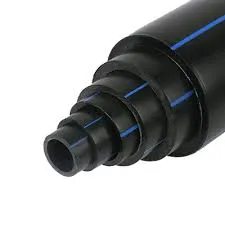ನವೆಂ . 15, 2024 03:52 Back to list
hdpe reinforced spiral corrugated pipe
Understanding HDPE Reinforced Spiral Corrugated Pipe
High-Density Polyethylene (HDPE) reinforced spiral corrugated pipes have emerged as a revolutionary solution in various industries, including agriculture, construction, and wastewater management. As the demand for durable and efficient piping systems continues to grow, understanding the benefits, applications, and manufacturing processes of HDPE reinforced spiral corrugated pipe can provide significant insights into its role in modern infrastructure.
What is HDPE Reinforced Spiral Corrugated Pipe?
HDPE reinforced spiral corrugated pipe is a type of drainage or conduit pipe made from high-density polyethylene, a polymer known for its excellent chemical resistance, strength, and versatility. This particular pipe features a unique spiral structure that enhances its mechanical properties while maintaining lower weight and flexibility compared to traditional piping materials.
The ‘reinforced’ aspect refers to the additional strength provided by the structural design of the pipe. The corrugations create a series of ridges and valleys that distribute loads evenly, allowing the pipe to withstand high pressures and extreme environments without deformation or failure. This innovative design provides significant advantages in terms of endurance and longevity.
Benefits of HDPE Reinforced Spiral Corrugated Pipe
1. Durability HDPE is known for its resistance to corrosion and chemical degradation, which means that HDPE reinforced spiral corrugated pipes can last for decades without significant wear and tear. This durability is particularly beneficial in environments with high levels of moisture and chemical exposure, such as in wastewater treatment facilities.
2. Flexibility The design of these pipes allows for considerable flexibility, enabling them to bend and adapt to the contours of the landscape without compromising structural integrity. This characteristic is invaluable during installation, particularly in challenging terrains.
hdpe reinforced spiral corrugated pipe

3. Lightweight Compared to traditional concrete or steel pipes, HDPE reinforced pipes are significantly lighter, which simplifies handling and installation. This not only reduces labor costs but also minimizes the equipment needed for transport and installation.
4. Cost-Effectiveness Though the initial investment may be higher than some alternatives, the longevity and reduced maintenance costs associated with HDPE reinforced spiral corrugated pipes often result in lower overall expenses over time. Their resistance to leaks and ruptures also decreases the likelihood of costly repairs.
5. Environmental Impact As sustainability becomes essential in construction and infrastructure, HDPE pipes offer a greener alternative. Made from recyclable materials, they contribute to reducing environmental footprints. Their longevity also means fewer replacements, thereby reducing waste.
Applications of HDPE Reinforced Spiral Corrugated Pipe
Due to their versatile properties, HDPE reinforced spiral corrugated pipes are used in various applications
- Stormwater Management These pipes are ideal for handling stormwater runoff, directing excess water away from urban areas, and reducing the risk of flooding. - Sewage and Wastewater Systems Given their chemical resistance, they are extensively used in sewage systems and wastewater treatment facilities, ensuring safe and efficient transportation of waste materials. - Irrigation and Agricultural Drainage Farmers utilize these pipes for efficient irrigation systems and to drain excess water from fields, promoting healthier crop growth. - Industrial Applications Many industries rely on these pipes for transporting chemicals, slurries, and other fluids, benefitting from their robust construction and resistance to corrosion.
Conclusion
In summary, HDPE reinforced spiral corrugated pipes represent a significant advancement in piping technology, offering unparalleled durability, flexibility, and cost-effectiveness. Their ability to perform effectively in a range of challenging environments makes them an invaluable resource across numerous industries. As infrastructure continues to evolve, the adoption of innovative materials like HDPE will play a critical role in building more resilient and sustainable systems. Understanding the advantages and applications of these pipes can help stakeholders make informed decisions that foster efficiency and sustainability in their projects.
-
Durable PP Rigid Sheet: Lightweight, Chemical Resistant Solutions
NewsAug.21,2025
-
PVC Grey Sheet for Extraction: Chemical Resistant & Durable
NewsAug.19,2025
-
Durable PVC Pipe Fittings for Plumbing & Irrigation Needs
NewsAug.18,2025
-
HDPE Steel Belt Reinforced Spiral Corrugated Pipe | High Strength
NewsAug.17,2025
-
HDPE Pipe Fittings: Durable, Leak-Proof Solutions
NewsAug.16,2025
-
Premium CPVC Sheet: High-Temp & Chemical Resistant Solutions
NewsAug.15,2025

